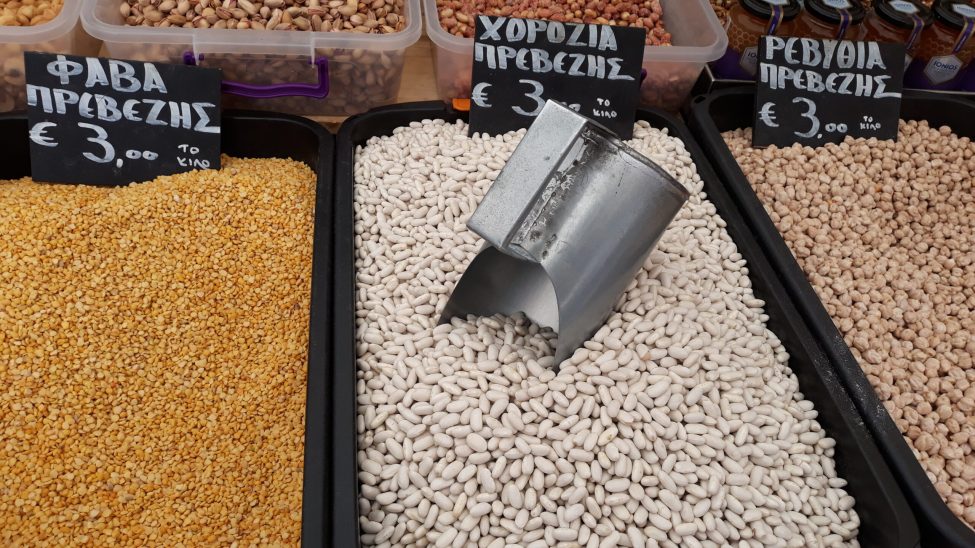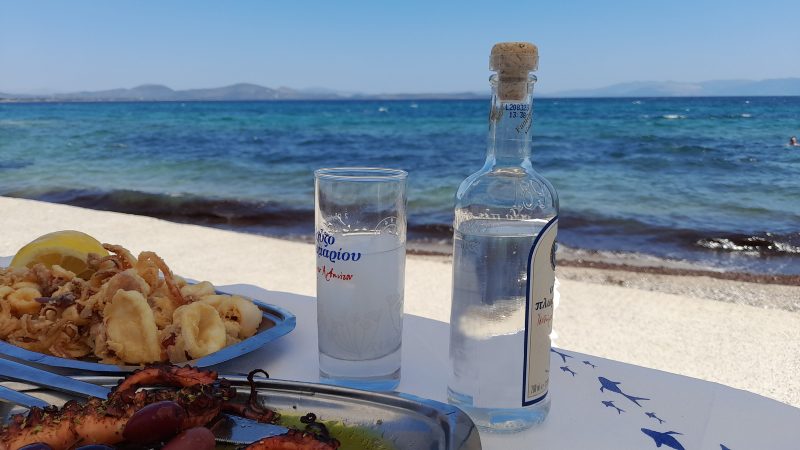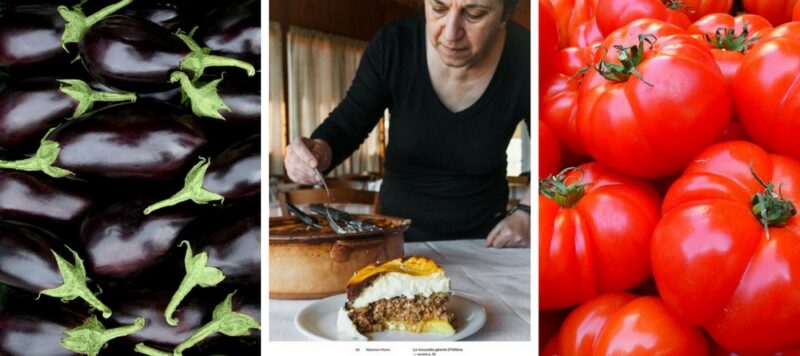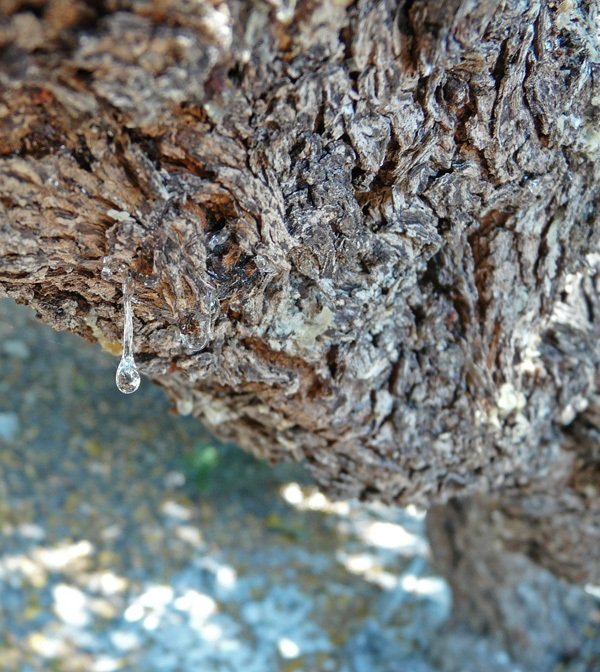The “poor man’s dish” has become a nutritional “must”! If you ask the Greeks what their national dish is, they will answer without hesitation: fasolada, the bean soup. Yes, neither the moussaka nor the fried calamari! Indeed, pulses have fed the people of Greece for generations. They are still very present in the daily diet of the country. Dried vegetables in Greek cuisine are delicious and healthy!
Dried vegetables and their cousins around the world
All dried vegetables have one thing in common: they are contained in a pod, so they belong to the large family of legumes. Not all legumes are edible for humans, some are used as fodder (alfalfa, clover, sweet pea), others are ornamental (wisteria, acacia). But many of them are adapted to human food, these are the pulses: beans, soybeans, lentils, chickpeas … They are found on all continents and are consumed by people all over the world. But back to Greece.
The pulses, “ospria” in Greek, that are mainly used in the country’s cuisine are white beans, classic or giant (the equivalent of Soissons in France), chickpeas, lentils, dolichan beans or black-eyed beans, fava beans and fava (yellow lenses).
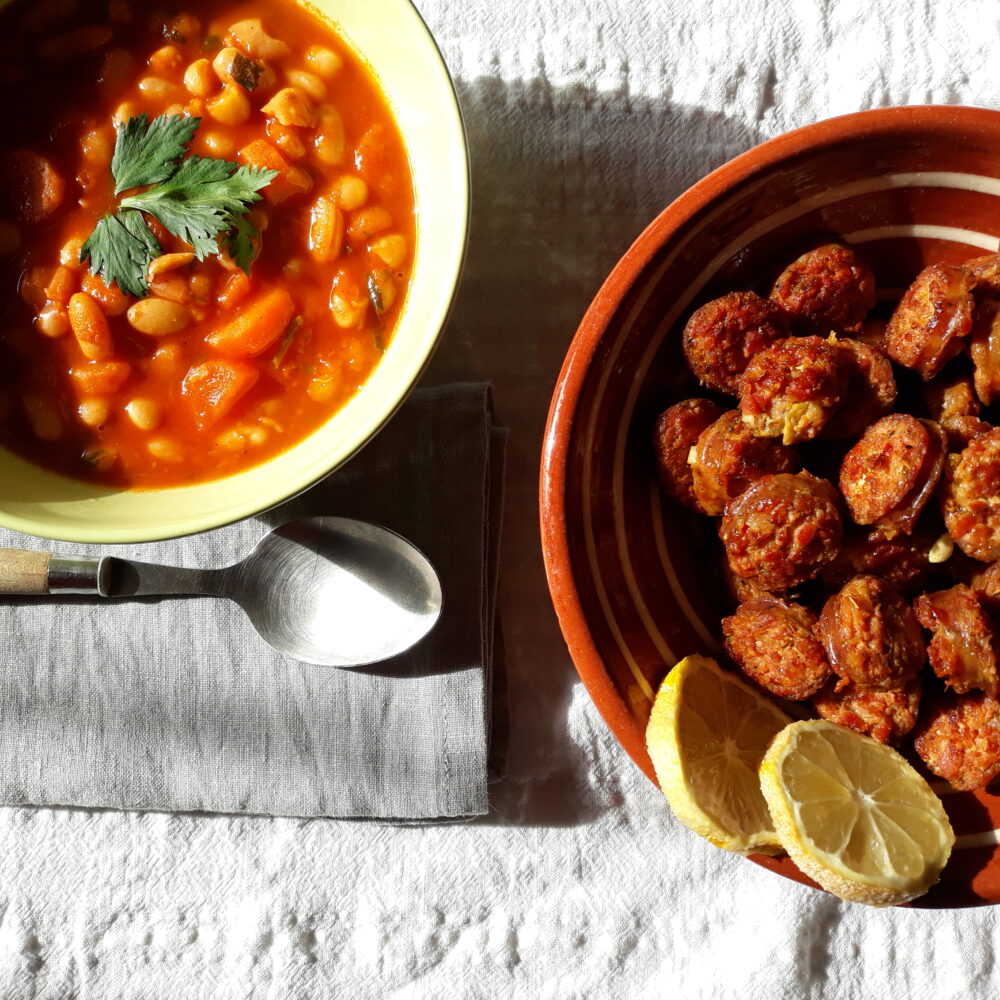
The “ospria” in the history of Greek food
At the excavations of the site of Akrotiri in Santorini destroyed around 1600 BC by a volcanic explosion, archaeologists found burnt seeds of the plant Lathurus Clymenum L. This is the fava, the broken yellow lentils, still one of the great specialties of the island. In fact, fava was already cultivated and consumed here 3600 years ago! This shows how old the love affair between the Greeks and the “ospria” is!
In addition, pulses grow easily and adapt to almost any climate. They are not very demanding in water except for beans and they do not need a very rich soil. Even in the arid land of the Cyclades, chickpeas and fava grow without problems. Moreover, the circular threshing floors that are often seen in the islands were used until recently for threshing chickpeas with the help of mules or donkeys.
Considered a “poor man’s dish” for many years, pulses have literally saved lives during times of famine. Modern medicine has rehabilitated them. Indeed, they are rich in fiber, vegetable proteins, iron and vitamins. Thus, they are a very healthy food that “stalls” without making you fat. Nowadays, nutritionists recognize their virtues and place them among the “must” of the Mediterranean diet.
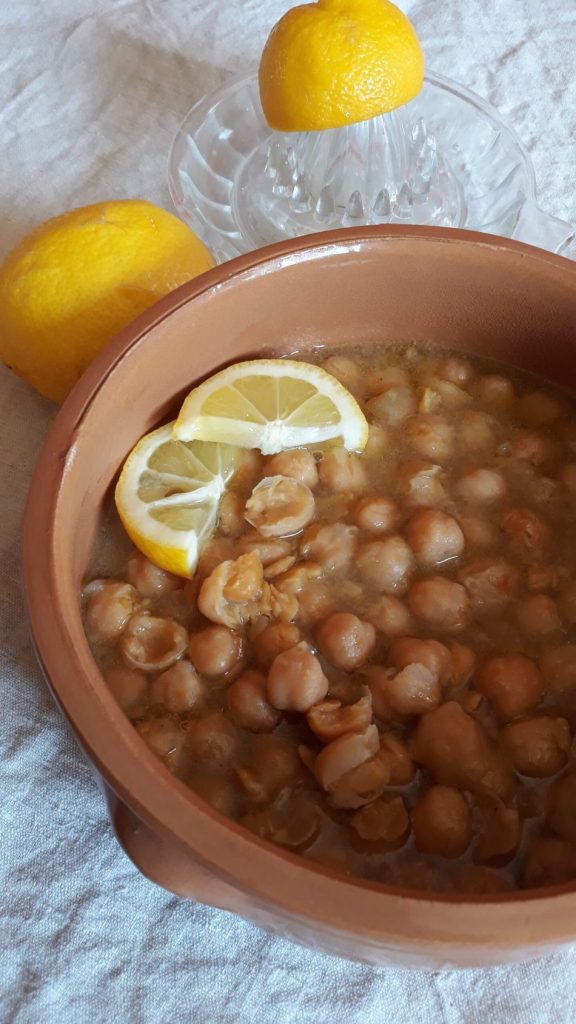
We know that the Greeks are very attached to their traditions. Also, despite the change in lifestyle, they continue to include pulses in their diet. Indeed, they are often present on the menu of Wednesday or Friday (lean days for the Orthodox) and of course during the Lenten fast which strictly excludes all animal protein. In any case, Greek families eat pulses at least once a week.
Some tips for preparing dried vegetables in greek cuisine
How to choose them: pulses keep well but it is preferable to eat them within a year of harvest. If they are crumpled, yellowed, with brittle skin, it is better to avoid buying them. For beans in particular, make sure that the skin is smooth and white. Sometimes we can read: νέας εσοδείας (new harvest).
Soaking: Of course, chickpeas and giant beans should be soaked for at least 12 hours, but not lentils or fava. For black-eyed or white beans, soaking is not essential, but it does reduce cooking time.
How much water should I cook them in? It is important to start cooking pulses in cold water. The proportion of water to be added is generally 1 to 3, for example for 500gr of beans before cooking, add 1,5 liter of cold water.
Rainwater is also ideal for cooking pulses. It makes them melt and reveals their taste!
During cooking: Here is a tip for make pulses more digestible and avoid intestinal “side effects”: put them in a pot of cold water, bring to a boil for 10 minutes, discard the water, add the indicated amount of hot water this time, add the other ingredients of the recipe and continue cooking. Unfortunately, this way some of the nutrients are lost.
A detail but not the least: To have melting vegetables, always add salt at the end of cooking, the opposite prevents them from softening.
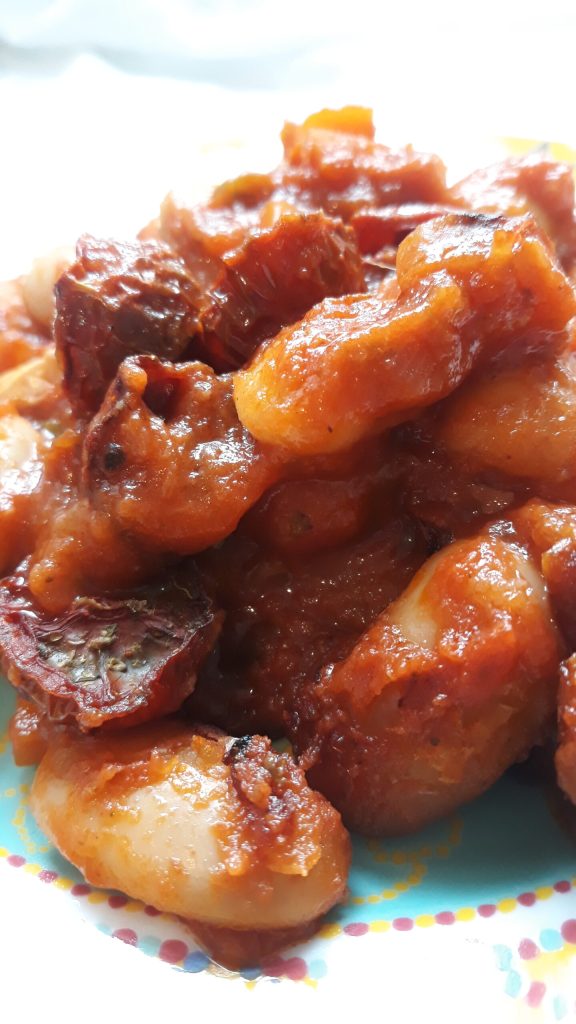
The classic Greek specialties based on “ospria”
This list is endless and varies according to region and local or family traditions. But the best beans and giant beans in the country come from Kastoria or Prespes, in Western Macedonia. This is where you will taste an excellent fassolada, white bean soup with tomato and celery, the famous Greek national dish. Accompanied by a smoked or salted fish from the lake, it is a treat! Besides, in all the mountainous regions they prepare the bean soup, in Pelion, in Vermio, in Parnassos.
In Epirus, the “gigantes”, the giant beans, are cooked without tomato, with a mixture of wild herbs; they are also sometimes sprinkled with feta cheese.
The fava of Santorini
This is exceptional, the volcanic soil of the island gives it a special taste. Moreover, it benefits from a PDO. You can taste the “orphan” version (just sprinkled with lemon and olive oil) or “married” (seasoned with dried tomatoes, capers, onions, octopus …).
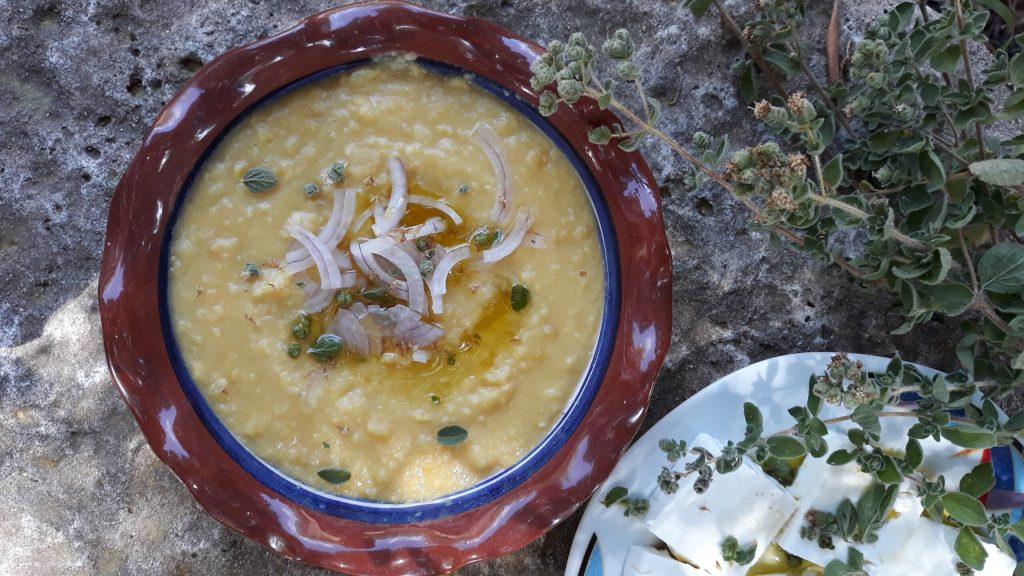
The most typical dish of Sifnos is the “ revithada “, a chickpea soup cooked in a bread oven for several hours. The water traditionally used is rainwater, collected in the cisterns of the houses.
At Rhodes, you will also taste the “ pitaroudia “, fried pancakes with chickpea puree.
As for the lentils, the tastiest are those in Farsala, Thessaly, in central Greece. They are prepared in soup, sprinkled with lemon juice. Add a few orange peels, their taste will be sublimated!
Black-eyed beans (mavromatika) are most often prepared in a salad with white onion, parsley, lemon and olive oil.
The most amazing recipe based on pulses is certainly the “ eftazymo ” (kneaded seven times). This bread is prepared with chickpea leaven, flavored with spices and eaten on religious holidays.
In Crete, we appreciate the puree of dry beans. It is eaten drizzled with lemon and olive oil and accompanied by “volvi”, edible flower roots prepared as pickles. Amazing!
Recipe: warm salad with mavromatika and chard
And here is one of my favorite recipes based on dried vegetables, a typical specialty of Cyprus. Here it is:
For 6 people:
- 250 gr black-eyed beans
- 1 kg of chard leaves
- Lemon, olive oil, salt, ground pepper
Place black-eyed beans in a saucepan with 80 cl of cold water, bring to a boil and cook until melted, about 45 mins. Salt at the end of cooking, drain and let cool. In another pan, cook the chard leaves, previously washed and coarsely chopped, in very little salted water. Drain and gently mix with beans. Just before serving, add pepper, lemon juice and olive oil.
This salad is eaten warm.
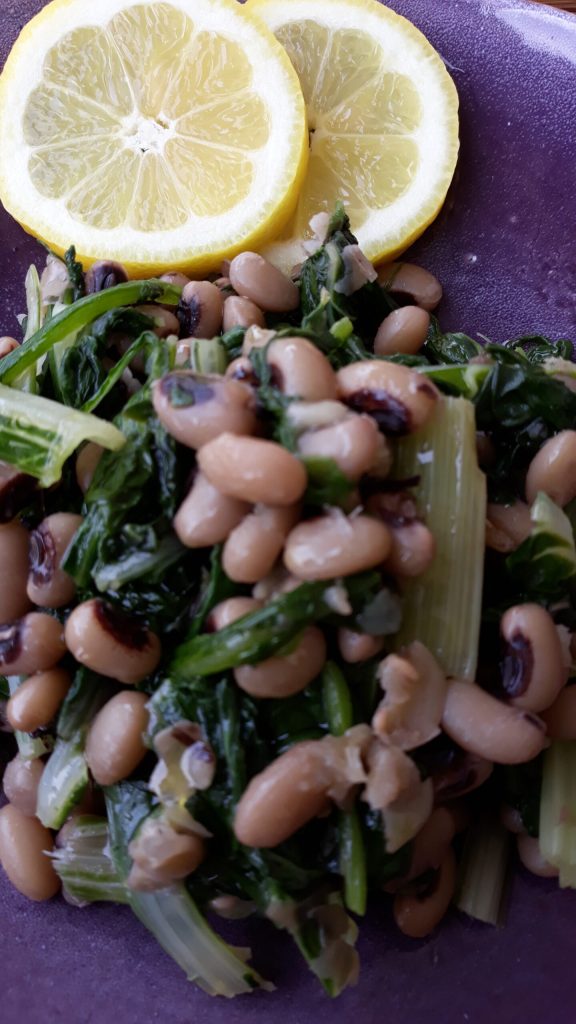
Good discovery!
Evi S.
If you like Greek food…
Find out why as we take you on this award-winning Athens Food Tour to discover real Greek cooking in the city’s tastiest neighborhoods.
